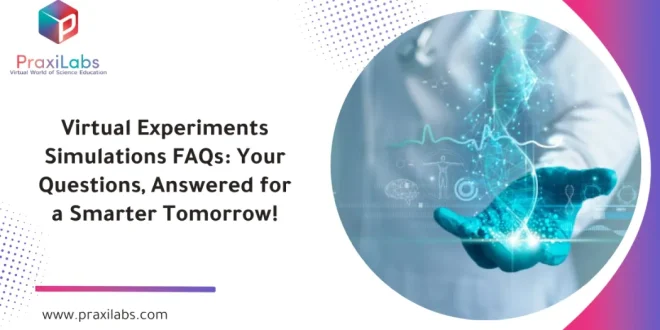Last Updated on August 16, 2025 by Muhamed Elmesery
Virtual experiments simulations are increasingly spreading in education, providing interactive and immersive ways for students to perform scientific experiments without the constraints of a physical lab.
Here are some common frequently asked questions (FAQs) about virtual experiments simulations:
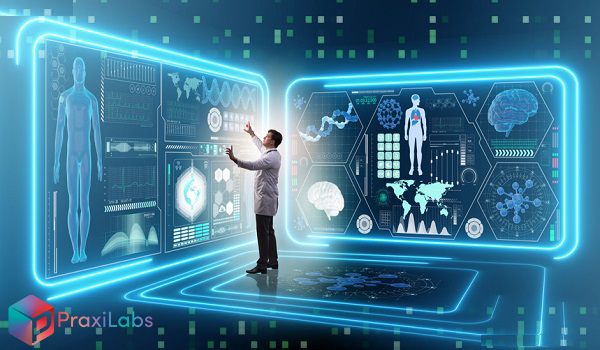
Table of Contents
What is virtual lab definition?
In science, a virtual laboratory definition is a 3D immersive e- learning technique that simulates the physical environment to enable students to conduct science experiments online, from their personal devices anytime and anywhere.
Virtual laboratories help both teachers and students achieve their educational goals by facilitating the application of the practical side of the curriculum, teaching various scientific principles and techniques.
What are virtual experiments simulations?
Virtual experiments simulations are interactive digital environments that provide users with everything they need to conduct experiments and allow them to engage in scientific learning in a safe environment without limitations or dangers.
Get your virtual lab simulation free online access for immersive virtual labs now!
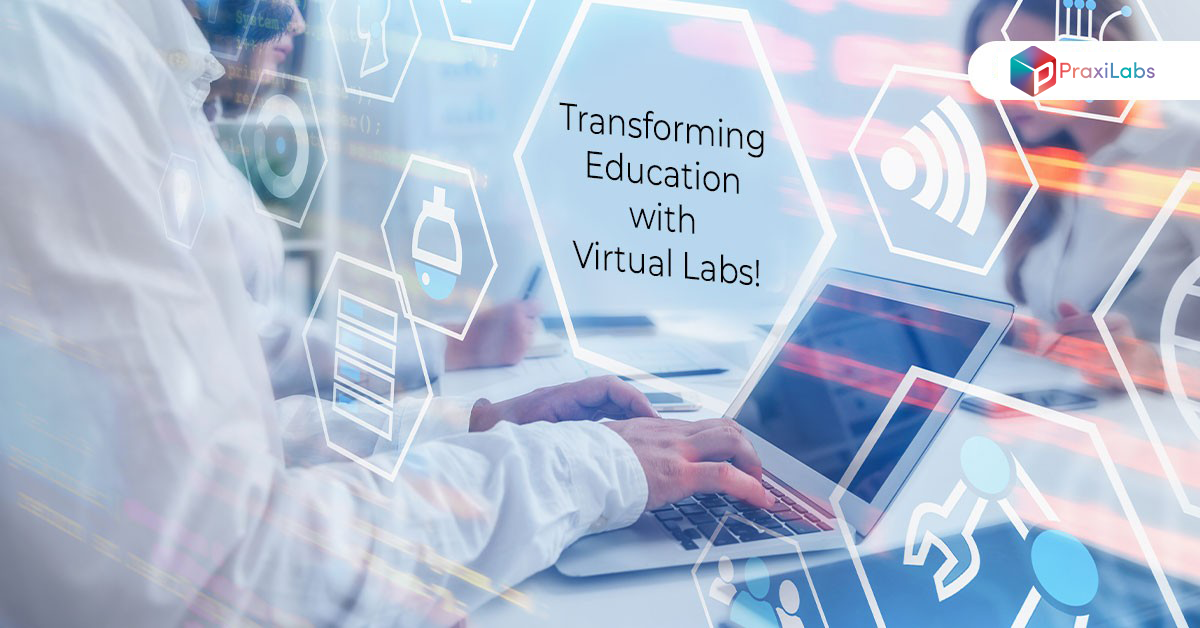
How do virtual laboratory simulations work?
Virtual Labs are essentially attractive simulators that represent all the components and setups of physical labs. Frontend and backend technologies are used to make any simulator attractive.
In any simulator, frontend technologies are basically used to display everything in a presentable way that users see on a simulator page. Frontend technologies are responsible for the look and feel of the simulator and ensure a responsive design for the simulator.
To create the frontend, developers use the combination of:
- HTML (used to create the skeleton of webpage)
- CSS (used for styling and design)
- JavaScript (to make the simulator interactive).
Backend technologies work behind the scenes of a simulator. These technologies primarily focus on the working of simulators. The working of these technologies cannot be directly seen by users.. The backend powers the frontend and uses languages like Java, Python, PHP, etc.
Frontend and backend technologies are very different from one another just like two sides of the same coin. They are equally important and play a vital role in the development of simulators for any Virtual labs.
The main frontend development languages together create everything that is visually presented on the simulator screen when users visit any Virtual lab. With the help of frontend technologies, the developer forms the basis of what the user can see and experience on the simulator. On the other hand, the backend is the brain of the simulator that is never visible to the user and all the processing and calculations are done with the help of backend technologies.
Source: https://ijiset.com/vol8/v8s5/IJISET_V8_I05_42.pdf
What are the benefits of using virtual experiments?
Virtual experimentation and laboratories offer more than just a virtual microscope lab for each student; rather enriches the students’ knowledge and understanding through several benefits:
-
Safety
The science virtual laboratory for students protects them from many hazards found in real labs such as direct exposure to toxic substances or radioactive chemicals or electricity as there is no direct handling of these dangerous materials; all experiments are done online.
-
Cost-Effective
Virtual laboratories reduce the need for expensive laboratory equipment, tools, materials, and other supplies. They are considered a cost-effective alternative, allowing educational institutions and universities to offer practical chemistry experiences for their students without the financial burden.
-
Flexibility and Accessibility
Students can access the virtual simulations anytime and anywhere, without the need for physical lab space or specific equipment and tools, this makes virtual labs a suitable online learning method for different learning styles.
-
Time Efficiency
By using virtual labs, students can save time and effort, as they eliminate the need to move between different laboratories. Students can save time by accessing experiments, and learning resources without the need for setup or cleanup which enables them to focus more on the core learning objectives.
-
Interactivity
Virtual experiments simulations offer interactive and immersive 3D simulations and visualizations for better understanding and to eliminate boredom among students.
PraxiLabs, the 3D virtual lab for teaching science, provides students with access to realistic biology, chemistry, and physics labs and enriches their understanding with a variety of informational and educational content.
Pick the Best Virtual Plan or You
-
Available Anytime, Anywhere and for Unlimited Use
The 3D science experiments simulations provide a virtual learning and teaching environment that aims to develop students’ practical skills and learning outcomes.
Since they are available through the Internet, students can perform many different experiments without being restricted to specific places or specific times as is the case with real laboratories. Students can conduct their experiments with unlimited, 24/7 access.
Also, by using the virtual labs students can repeat their virtual 3D science experiments as many times as needed until they grasp and understand all the information.
Can virtual experiments replace traditional labs?
According to a study conducted on the role of computer- based materials for the teaching of developmental biology in order to aid teachers in assessing their value, despite digital tools having value, they should not replace all of the traditional laboratory activities. Clearly, both virtual labs and traditional labs must be included in laboratory exercises. Relying solely on one or the other is inappropriate.
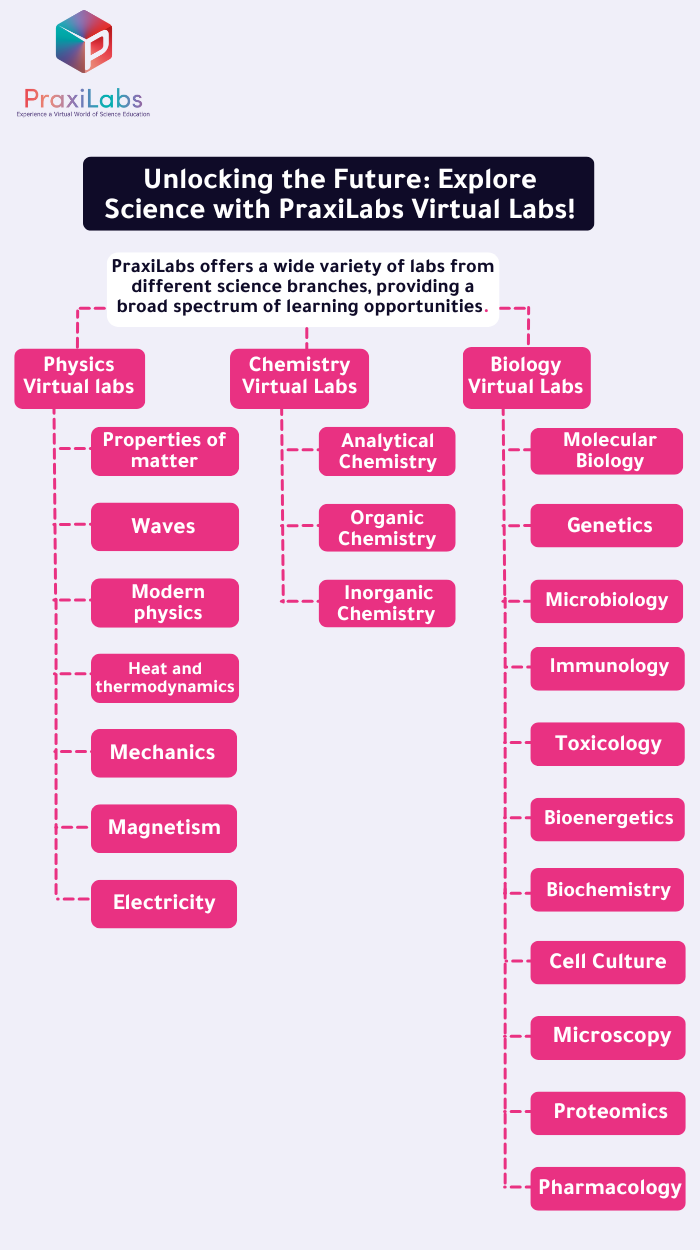
What types of subjects can benefit from virtual experiments?
Science virtual experimentation and laboratory can be used for several subjects:
Virtual Physics Experiments (ex: Properties of matter – Waves – Modern physics – Heat and thermodynamics – Mechanics – Magnetism – Electricity)
Chemistry Virtual Labs (ex: Analytical Chemistry – Biochemistry – Inorganic Chemistry – Organic Chemistry – Physical Chemistry)
Virtual Laboratory Biology Simulations (ex: Molecular Biology – Genetics – Microbiology – Immunology – Toxicology – Bioenergetics – Biochemistry – Cell Culture – Microscopy – Proteomics – Pharmacology)

How can educators integrate virtual experimentation and laboratory experiments into their curriculum?
Here are some effective tips for educators looking to integrate virtual experiments simulations into their educational curriculum:
- Define and establish clear learning outcomes, which help in choosing the most suitable virtual lab simulations that are aligned with educational goals.
- Select appropriate simulations that reflect the context of the curriculum. For instance, Science educators might use virtual lab simulations to teach their students various science experiments.
- Foster deep learning for your students ,as this approach improves critical thinking and problem-solving skills, as students must navigate complex scenarios that mimic real-world challenges.
- Provide support and guidance to your students before engaging with simulations to help them understand the objectives and the mechanics of the simulation. This preparation can increase students’ confidence and engagement.
- Facilitate reflection and debriefing sessions after completing a simulation, where students can reflect on their experiences, analyze what they learned, and more. Reflection is a key component of experiential learning.
- Incorporate technology wisely to enhance the learning experience.
- Evaluate the effectiveness of the simulations. This can be done through assessments, feedback from students, and analysis of learning outcomes.
The previous FAQs highlight the critical importance of virtual experiments simulations in education to provide students with innovative ways to engage with scientific concepts and increase their learning outcomes.
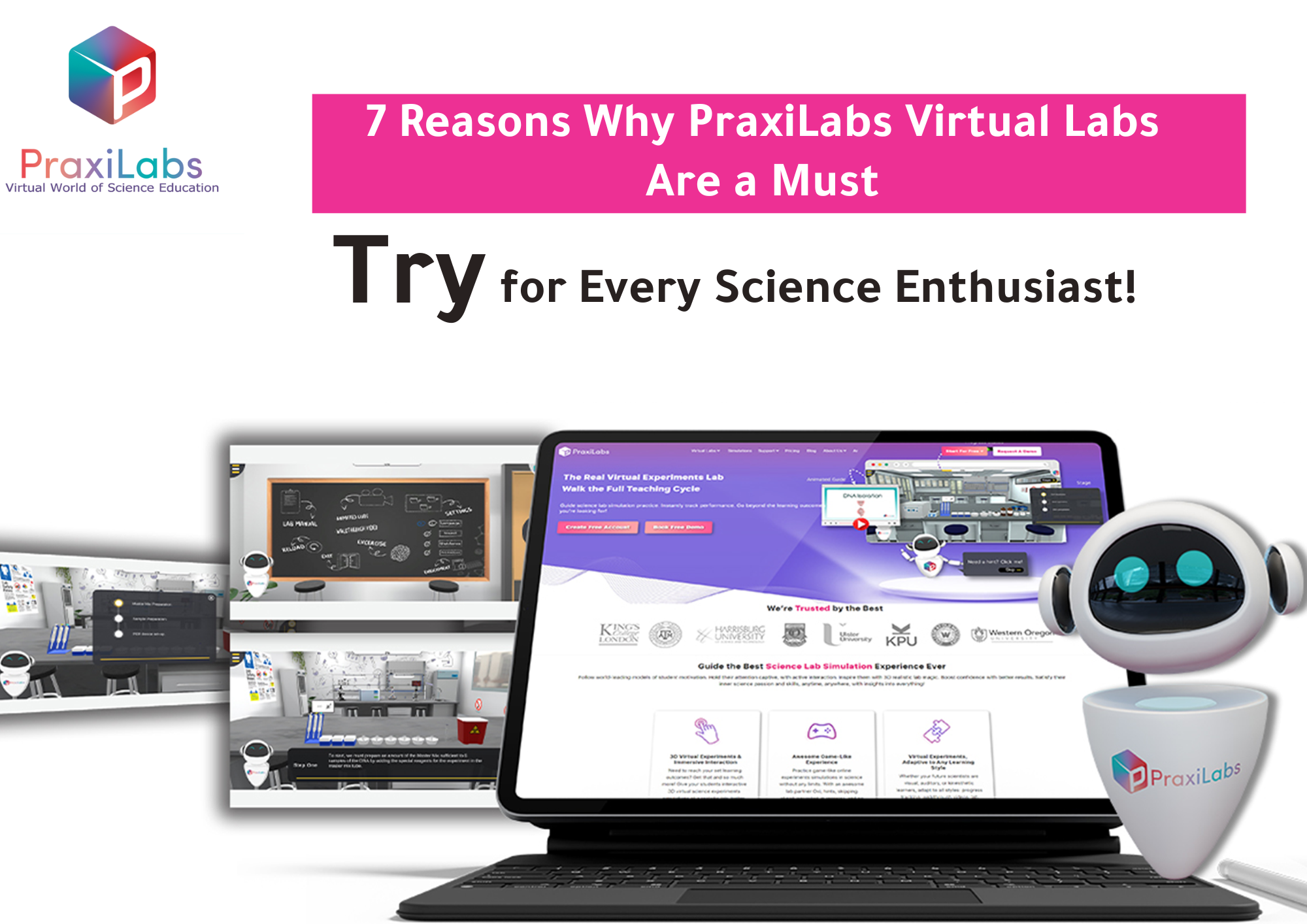
8 Reasons Why PraxiLabs Virtual Labs Are a Must-Try for Every Science Enthusiast!
- With PraxiLabs, students can actively learn while performing their experiments. Your students get a full experience, with guidance and learning materials to further aid the learning process rather than simply following through and covering it.
- PraxiLabs is compatible with all common devices and operating systems, with minimum memory requirements and browser capabilities and it allows for offline usage on smartphones and tablets.
- To make virtual science learning more personalized, we have developed a “skipping ahead” feature which allows your students to select and focus on the stage they want to understand more.
- If you don’t have an LMS in place or can’t integrate, we’ve got you covered. With our miniLMS you gain instant access to our web-based dashboard where you can access the same reports, data and administrative tools that you would via LMS integration.
- PraxiLabs also provides custom simulation and virtual lab solutions designed specifically for an organization’s needs.
- We provide a virtual Lab guide to learn safety precautions in a real lab and proper behavior/action in real labs,saving students from potentially harmful mistakes and avoiding damage to labs,thereby lowering costs.
- PraxiLabs provides a complete solution, which does not aim at simply proving a basic “tool” that educational institutions can use, but rather provides an interactive and enriching learning experience that provides students with materials, guidance, experience and engaging approaches, which further enhance the learning process, make it more engaging and eliminates concerns such as costs and hazards, along with other constraints usually found in traditional labs.
- PraxiLabs provides more than 200 in-demand 3D virtual experiments simulations, to help enhance your students’ learning experience in sciences, biology, physics, and chemistry.
Increase your Students’ Learning Retention and Engagement With PraxiLabs’ virtual lab simulations!
 PraxiLabs A virtual world of science
PraxiLabs A virtual world of science

